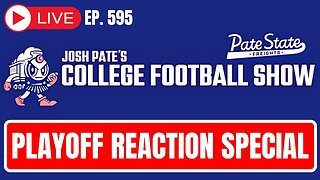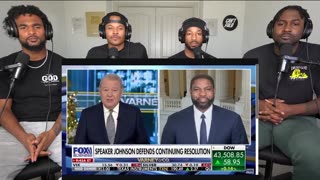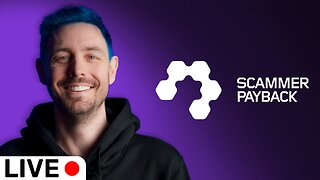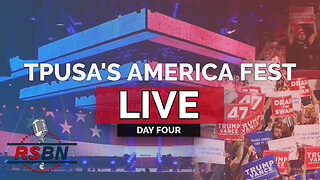Premium Only Content

Back from my 16th Suspension, 99.5% of YouTube speaking truth is controlled opposition
Follow me here: https://rumble.com/c/realmikemartins
YouTube, as a popular platform for content creators, relies on a system of community guidelines to maintain a safe and enjoyable environment. However, the implementation of community strikes has faced significant criticism due to their perceived unfairness and lack of transparency. In this article, we will explore the concept of YouTube community strikes, discuss the reasons behind their perceived unfairness, and highlight the concerns regarding transparency within the system.
Community strikes on YouTube are penalties imposed on channels that violate the platform's community guidelines. When a channel receives a strike, it may face consequences such as video removal, limited account functionality, or even termination. These strikes serve as a means for YouTube to regulate and moderate content to ensure it aligns with its policies.
One of the primary concerns with community strikes is the perceived unfairness in their application. Content creators often find themselves receiving strikes for vague or subjective reasons, making it difficult to understand which specific guidelines were violated. The lack of clarity can lead to frustration and a sense of injustice among creators who believe their content does not warrant the strike. This inconsistency in enforcement undermines the trust between creators and the platform.
Moreover, YouTube's strike system follows a "three-strikes" policy, where three strikes within a 90-day period can lead to channel termination. However, this policy fails to consider the severity of the violations. Lesser offenses may result in the same penalty as more severe ones, without taking into account the context or intent of the creator. This one-size-fits-all approach can be seen as unjust, punishing creators for minor infractions that may not warrant such severe consequences.
Transparency is crucial in any moderation system, yet it remains a significant issue with YouTube's community strikes. Creators often receive strikes without clear explanations or evidence regarding the violation, making it challenging to appeal or rectify the situation. Without specific details, creators struggle to understand which aspects of their content need improvement, hindering their ability to comply with the guidelines effectively.
Furthermore, the appeals process can be convoluted and opaque. Creators are required to navigate a complex system with limited guidance, often receiving automated responses that do not adequately address their concerns. This lack of human interaction and personalized communication leaves creators feeling isolated and powerless, contributing to the perception of an unfair and unaccountable system.
To address the concerns surrounding community strikes and promote fairness and transparency, YouTube should consider implementing the following improvements:
Clear and specific explanations: YouTube should provide detailed explanations of the violations committed, including timestamps and specific guidelines that were breached. This transparency would enable creators to understand the issues at hand and make necessary adjustments to their content.
Contextual evaluation: YouTube should adopt a more nuanced approach to evaluating content violations. The severity of an offense and the intent behind it should be considered, ensuring that penalties are proportionate and fair.
Human review and support: The appeals process should involve human reviewers who can provide individualized responses and offer guidance to creators. This human interaction would help restore trust and address the concerns of creators more effectively.
Timely resolution: YouTube should aim to expedite the appeals process and provide timely resolutions to creators. Extended waiting periods exacerbate the frustration and anxiety experienced by creators during the strike period.
YouTube community strikes have become a subject of controversy due to their perceived unfairness and lack of transparency. The inconsistencies in enforcement, combined with the absence of clear explanations and opaque appeals processes, contribute to the frustration felt by content creators. By addressing
Back from my 16th Suspension, 99.5% of YouTube speaking truth is controlled opposition
-
 6:43
6:43
Mike Martins Channel
5 days ago $0.08 earnedChrystia Freeland steps down, Who cares, the Damage is done , Mission Accomplished.
3632 -
 1:30:48
1:30:48
Josh Pate's College Football Show
9 hours ago $3.88 earnedCFP Reaction Special | Early Quarterfinal Thoughts | Transfer Portal Intel | Fixing The Playoff
25.1K -
 23:55
23:55
CartierFamily
3 days agoElon & Vivek TRIGGER Congress as DOGE SHUTS DOWN Government
84.9K94 -
 5:43:44
5:43:44
Scammer Payback
2 days agoCalling Scammers Live
166K25 -
 18:38
18:38
VSiNLive
2 days agoProfessional Gambler Steve Fezzik LOVES this UNDERVALUED Point Spread!
124K17 -
 LIVE
LIVE
Right Side Broadcasting Network
10 days agoLIVE REPLAY: President Donald J. Trump Keynotes TPUSA’s AmFest 2024 Conference - 12/22/24
4,158 watching -
 4:31
4:31
CoachTY
1 day ago $27.15 earnedCOINBASE AND DESCI !!!!
171K11 -
 10:02
10:02
MichaelBisping
1 day agoBISPING: "Was FURY ROBBED?!" | Oleksandr Usyk vs Tyson Fury 2 INSTANT REACTION
94.7K14 -
 8:08
8:08
Guns & Gadgets 2nd Amendment News
2 days ago16 States Join Forces To Sue Firearm Manufacturers Out of Business - 1st Target = GLOCK
118K90 -
 10:17
10:17
Dermatologist Dr. Dustin Portela
2 days ago $18.68 earnedOlay Cleansing Melts: Dermatologist's Honest Review
154K14